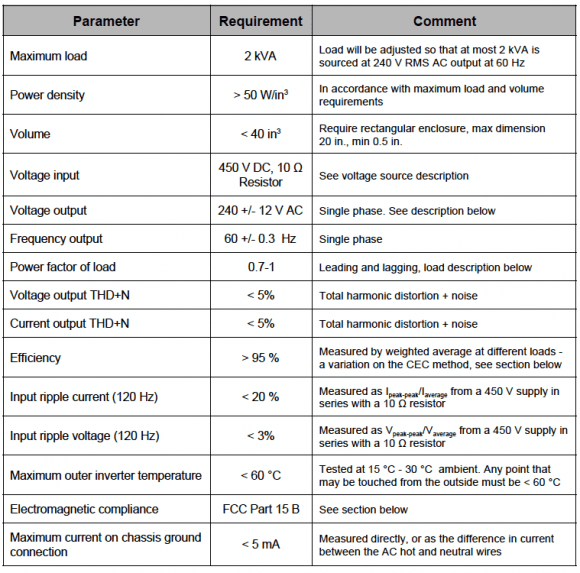If Google is rewarding ‘power electronics’, it must be worth it…
1. The bounty…
That’s done. Google is officially in power electronics. Well they were already. They did invest into Transphorm (Gallium Nitride based power semiconductors) but that was through the Google Ventures subsidiary. Now that their Little box Challenge is claiming a prize for reduced size inverter, We can’t say anymore it’s not in their targets.
$1M is the reward for that ‘challenge’: Making a small size inverter of 2kW.
Get there for more info: https://www.littleboxchallenge.com
2. The playground…
If you think about it, it’s all in their interest and made sense from the beginning. I mean:
- Google is running huge servers, which use huge amounts of energy. Translation: More efficient power electronics means smaller electricity bills…
- They are working on laptop designs (and not only the OS) through Chrome books and the $100 laptop project for third world countries.
- They also work on self-driving cars. And I’m quite sure that having an electric car that drives itself to the next charging station is a plus for you.
- They invested in a top GaN devices manufacturers Transphorm. The company say they target PV inverters, Motor drives and so on… I suspect them to look at laptop adapters too.
All of these are using power electronics at a time.
For those of you who are not familiar (yet…) with this barbarian word: Power electronics in the electronic discipline where you focus on taking electricity in one form, and delivering it in another form (DC to AC, as an example). It’s opposed to analog or digital electronics, where you take one information to deliver it in another (like MP3 to audio analog).
It’s also known now that Google is more and more implied in Grid technologies (transport and distribution of electricity) and working on that fancy trend: SmartGrid. They have very good network knowledge ( errr… Yeah it’s obvious!) which is key for communication between power electronics converters. It avoids islanding (when a PV inverter is disconnected, but still producing, and has no metronome to rely on) or other kind of bad issues, but also great improvement like storage when needed, and use when needed too. Communications is a basic of Smartgrid.
3. The target…
So for those of you who are already in power electronics, here are the specs:

Yes, this is a datasheet or more a specifications sheet maybe, about an inverter, and issued by Google… If you are not either shocked or excited, I am for you!
So, let’s focus. What do they expect: 2kVA with a 240V@60Hz output and 450V DC input. That’s quite common and they are probably thinking about Photovoltaic decentralized inverters. >95% efficiency: The experienced one know it’s standard too in the PV inverter world. So what it so special about that target that it’s worth $1M: The size of course.
Smaller than 40 in.³ and max 20 in. size rectangle. Back in the metric system it’s 655cm³, or about 0.65 liters which is a bit more than a pint in the drinking system… That is very small for such power.
More seriously, it’s a 3.08kW/L.
4. The bounty hunters…
APEI (Arkansas Power Electronics Institute) did very small sized inverter (based on Silicon Carbide of course) to charge an electric car ( a Prius). It’s here and it’s actually matching the requirements, on paper (and on paper only). You will tell me that 6kW in such size is 5kW/L, which is better than the 3.08kW/L asked. The specifications were not the same either.
Though the question is to be able to reduce it to the 2kW and 0.65L demanded. There are uneasily shrinkable parts in there: The passive components. And in addition to that, the “thing” must be air-cooled inside but not higher than 60°C outside.
Another point. It is reserved to Academic groups, University labs.
I’m going back to my database to list and interview the bounty hunters.




Trackbacks & Pingbacks
[…] already the challenge when it was announced and when the 18 finalists names were released. More than 2,000 teams registered for the […]
[…] 18 finalist teams for the Little Box Challenge, presented by Google and the IEEE Power Electronics Society, converged at the Energy […]
Leave a Reply
Want to join the discussion?Feel free to contribute!